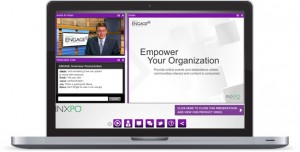With today’s dependence on the Internet, webcasting has been gaining in popularity all over the globe. This new form of media has aroused the interest of journalists, businessmen, entrepreneurs, and celebrities alike all using webcasting to its full benefit. A webcast is defined as any broadcast transmitted over the Internet with the purpose to educate, train or persuade people.
How Does Webcasting Work?
In order to create a webcast system, its basic components – like software, a host server and capture cards – should be assembled. Content is generated on the system with the help of the software program and sent to the host server. Then, it’s a simple case of getting people to access the webcast via the Internet.
Types of Webcasts
There are different kinds of webcast software available on the internet such as webcasting software solutions with INXPO. These vary mainly on their format and purpose.
Live Webcast
As the name implies, a live webcast is a stream of a live event. Among popular webcasts today are those of sporting events. Baseball, basketball, boxing, and alike are popular examples of subjects being used for live webcasts. They provide audio and video streaming as the action happens in real time.
Live Webinar
Webinars are a specific type of webcast primarily used to educate people. Many universities now allow viewers to catch lectures and seminars via the Internet with a webinar.
Radio Webcast
A radio webcast makes use of only audio files to transmit content to listeners. Popular networks, like the BBC, offer radio webcasts for people to listen in in real time or consume at a later date.
Stored Webcast
If there are live webcasts, then there must also be stored webcasts. These videos are pre-recorded and do not happen in real time.
Podcasts vs Webcasts
Webcasting is different from podcasting because the latter requires audiences to download a file. Webcasts are streamed on the Internet with the use of sophisticated equipment. Podcasts are easier to generate with creators only needing to upload their videos or audio online for people to download.
Advantages of Webcasting

There are many benefits to generating a webcast. Many businesses see this as an opportunity to promote their products to a wider audience. Universities hosting webinars can field questions in real time.
Archiving
With webcasts available 24/7, audiences can watch a video and re-watch it at a later time. As long as the data is on the website, they are able to gain access to it and revisit it later. This gives potential customers more time to digest information and make timely decisions.
Immediacy
Since webcasts can be streamed online, multiple people can see these videos at the same time. All they need to do is access a certain webpage and find webcasts that interest them. With a click of a button, people from all over the globe can be exposed to a new product or service.
Interaction
Webcasting in real time gives audiences the opportunity to join in on the discussion. They can send messages and receive replies instantly. It breaks down the barrier among continents and nationalities.

